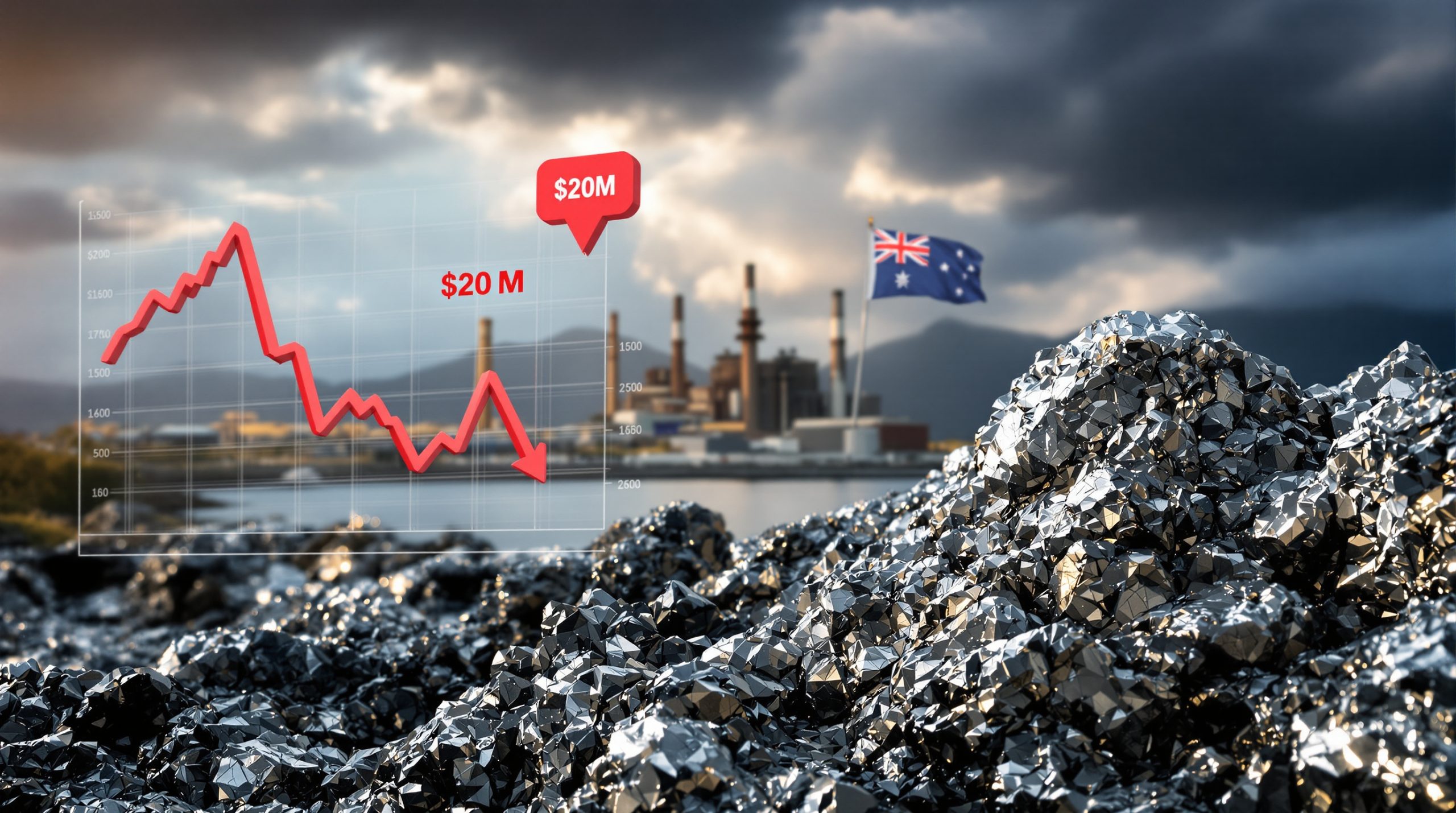Current Manganese Ore Price Trends at Chinese Ports
The manganese ore market has shown mixed price movements across Chinese ports this week, with particular strength in South African semi-carbonate and Gabonese ores. According to the latest data from Shanghai Metal Market (SMM), northern ports have maintained stability in Australian ore prices while seeing modest gains in other categories.
Northern Port Price Dynamics
At northern Chinese ports, Australian lump ore prices remained steady at 39-40 yuan/mtu, showing no week-over-week change. Similarly, Australian seed ore held firm at 35.8-36.8 yuan/mtu. However, other ore types demonstrated positive momentum:
- South African semi-carbonate ore saw the strongest gains, rising 1.52% week-over-week to reach 33.1-33.6 yuan/mtu
- Gabonese ore increased by 1.1% to 36.4-37.4 yuan/mtu
- South African high-iron ore maintained stability at 29.1-29.6 yuan/mtu
These price movements reflect both supply-side discipline from miners and evolving demand patterns from downstream consumers.
Southern Port Market Conditions
The southern port market displayed a slightly different pricing pattern, with Australian seed ore actually declining while other varieties strengthened:
- Australian lump ore remained unchanged at 39-40 yuan/mtu
- Australian seed ore decreased 0.56% to 35.3-35.8 yuan/mtu
- South African semi-carbonate ore increased 1.22% to 33.4-33.9 yuan/mtu
- Gabonese ore commanded a premium at 38.5-39 yuan/mtu (up 1.04%)
- South African high-iron ore increased 0.7% to 28.5-29 yuan/mtu
Notably, the significant price differential for Gabonese ore between northern and southern ports (roughly 2 yuan/mtu premium in the south) highlights the impact of regional supply-demand balances and logistics costs.
Market Insight: "The price stability in Australian ores amid increases in other varieties reflects both origin-specific quality factors and strategic positioning by miners protecting market share," notes SMM in their weekly analysis.
Manganese Ore Inventory Trends and Implications
Chinese port inventories of manganese ore have been gradually declining, a trend that market analysts are monitoring closely for its potential impact on future pricing.
Inventory Reduction Patterns
The latest port data reveals a consistent drawdown in manganese ore stockpiles across both northern and southern Chinese facilities. This reduction appears more pronounced at key northern logistics hubs, where concentrated steel and alloy production creates sustained demand pressure.
The inventory decline is primarily attributed to strategic month-end purchasing by downstream alloy producers, who typically accelerate procurement activities to meet production targets and fulfill contractual obligations before monthly accounting closures.
Supply-Demand Balance Indicators
The ongoing inventory reduction represents a significant market signal that warrants close attention. Key indicators include:
- Increased purchasing frequency from medium and large alloy manufacturers
- Higher volume per transaction compared to mid-month procurement activities
- More aggressive bidding behavior at port auctions and tender events
These activities collectively suggest a tightening supply-demand balance that could support price stability or potential increases in the near term, particularly if inventory drawdowns continue at the current pace.
Factors Driving Manganese Ore Price Movements
Multiple interconnected factors are currently influencing manganese ore prices in the Chinese market, with futures performance playing a particularly important role.
SiMn Futures Market Influence
The silico-manganese (SiMn) futures market has emerged as a key leading indicator for physical manganese ore pricing. Recent positive performance in SiMn futures contracts has created upward pressure on spot prices through several mechanisms:
- Sentiment transmission from financial to physical markets
- Forward price expectations influencing current procurement strategies
- Arbitrage opportunities between futures and physical markets
This relationship underscores the growing financialization of industrial commodities, with futures markets increasingly setting price direction rather than merely reflecting physical market conditions.
Producer Pricing Strategies
Overseas manganese ore miners have maintained remarkable discipline in their pricing approach despite fluctuating demand conditions. This strategic resistance to price concessions reflects:
- Production cost considerations with rising energy and labor inputs
- Portfolio optimization to maximize returns across different ore grades
- Long-term market positioning to avoid destructive price competition
Major producers from Australia, South Africa, and Gabon have collectively supported price stability by refusing to engage in competitive discounting, even during periods of inventory accumulation.
Regional Price Differentials
The notable price variations between northern and southern Chinese ports highlight regional market dynamics that influence manganese ore valuation:
- Logistics cost differentials including ocean freight, port handling, and inland transportation
- Regional alloy production concentrations creating localized demand patterns
- Quality and grade preferences among regional consumers
The most striking example is Gabonese ore, which commands a 2 yuan/mtu premium in southern ports (38.5-39 yuan/mtu) compared to northern facilities (36.4-37.4 yuan/mtu), reflecting both its quality attributes and regional consumption patterns.
Understanding Manganese Ore Types and Applications
The manganese ore market encompasses several distinct product categories, each with specific chemical and physical properties that determine their industrial applications and relative value.
Ore Classification by Origin and Properties
Australian Lump Ore (39-40 yuan/mtu)
Australian lump ore is characterized by its high manganese content (typically 44-48% Mn), low phosphorus levels, and consistent sizing (10-75mm). These properties make it particularly valuable for producing high-quality ferromanganese alloys used in specialty steel applications.
Australian Seed Ore (35.3-36.8 yuan/mtu)
Seed ore consists of smaller particles (0.5-10mm) with slightly lower manganese content than lump varieties. Its reduced size facilitates faster dissolution in alloy production but may require sintering or briquetting before use in blast furnaces.
South African Semi-Carbonate Ore (33.1-33.9 yuan/mtu)
This ore type contains both manganese oxide and manganese carbonate minerals, typically offering 36-42% Mn content with moderate levels of iron. Its intermediate composition makes it versatile for various alloy applications, particularly silico-manganese production.
Gabonese Ore (36.4-39 yuan/mtu)
Gabonese manganese ore is prized for its high manganese-to-iron ratio and low impurity levels. With manganese content often exceeding 45% and very low phosphorus, it commands a premium for high-purity ferromanganese and electrolytic manganese production.
South African High-Iron Ore (28.5-29.6 yuan/mtu)
This variety contains elevated iron content (Fe:Mn ratio often approaching 1:4) alongside 30-38% manganese. While commanding lower prices than high-manganese varieties, it offers cost advantages for specific silico-manganese applications where additional iron is beneficial.
Price Premium Factors
Several factors contribute to the price differentials between manganese ore types:
- Chemical composition: Higher manganese content generally commands premium pricing, with each additional percentage point of Mn typically adding 0.5-0.7 yuan/mtu in value
- Impurity levels: Lower phosphorus, silica, and alumina content justifies higher prices due to reduced slag formation and improved alloy quality
- Physical characteristics: Consistent sizing and lower moisture content improve handling efficiency and reduce processing costs
- End-use suitability: Ores suited for premium applications (high-carbon ferromanganese, electrolytic manganese) command corresponding price premiums
These factors collectively explain why Australian lump ore consistently trades at premium levels compared to South African high-iron varieties, with Gabonese ore positioned between these price points based on its specific attributes.
Seasonal Factors Affecting the Manganese Ore Market
The manganese ore market displays distinct cyclical patterns that influence both pricing and inventory levels throughout the year, with month-end effects representing just one component of broader seasonal dynamics.
Month-End Purchasing Patterns
The current inventory reduction coincides with typical month-end procurement behavior, characterized by:
- Budget utilization imperatives as purchasing departments seek to deploy allocated funds before month-end closures
- Production quota fulfillment with alloy plants accelerating raw material acquisition to meet monthly targets
- Contract timing alignments as many supply agreements follow monthly pricing and volume cycles
This cyclical pattern creates predictable demand surges in the final week of each month, often supporting prices during these periods before potential softening in early-month trading.
Seasonal Demand Fluctuations
Beyond monthly cycles, the manganese ore market experiences broader seasonal patterns tied to downstream industries:
- Q1 (January-March): Pre-Spring Festival stockpiling followed by holiday-related consumption slowdown
- Q2 (April-June): Construction season acceleration drives increased steel and alloy production
- Q3 (July-September): Summer production restrictions in some regions to meet environmental targets
- Q4 (October-December): Year-end production pushes to meet annual targets followed by pre-winter inventory building
These seasonal factors interact with month-end effects to create a complex cyclical pattern that experienced market participants incorporate into their procurement and inventory management strategies.
Steel mill maintenance schedules also influence manganese demand patterns, with coordinated maintenance periods typically reducing consumption during specific calendar windows, particularly in July-August and December-January.
Outlook for Manganese Ore Prices
The trajectory of iron ore price trends and manganese ore prices in the coming weeks will depend on several interconnected factors, with market indicators suggesting a cautiously optimistic outlook amid balanced fundamentals.
Key Market Indicators to Watch
Investors and industry participants should closely monitor these critical market signals:
- SiMn futures performance: Continued strength in the futures market would likely support physical manganese ore prices, with particular attention to contract backwardation or contango structures
- Port inventory depletion rates: Accelerating inventory drawdowns would signal potential supply tightness, especially if reaching below 5 million tonnes at major ports
- Alloy plant operating rates: Any increase in silico-manganese or ferromanganese production would directly impact ore demand
- Australian-South African price spreads: Narrowing differentials could indicate changing quality preferences or supply constraints
The interplay between these factors will determine whether the current mild price strengthening develops into a sustained upward trend or moderates into a period of stability.
Price Forecast Considerations
While precise price predictions remain challenging, several structural factors suggest manageable volatility in the near term:
- Supply-side discipline from major producers appears likely to continue, preventing sharp price declines
- Moderate steel production growth in China (forecast at 2-3% for 2025) should maintain baseline ore demand
- Strategic reserve policies from both producers and consumers will buffer against extreme price movements
Additionally, ongoing mineral exploration insights suggest potential new manganese resources could influence long-term supply dynamics, though immediate market impacts remain limited.
Disclaimer: This price outlook reflects current market conditions and available information. Actual price movements may differ significantly based on unforeseen economic, political, or supply chain developments. Readers should consider this analysis as one input among many for their decision-making processes.
FAQ: Manganese Ore Market Dynamics
How do manganese ore prices compare to historical levels?
Current manganese ore prices represent a moderate position relative to historical trends. While below the exceptional peaks seen during 2021's post-pandemic demand surge (when Australian lump ore briefly exceeded 60 yuan/mtu), today's prices remain well above the cyclical lows of 2019-2020 when some varieties traded below 30 yuan/mtu.
This positioning in the middle of the historical range reflects the market's current balanced fundamentals, with neither severe supply constraints nor significant oversupply conditions prevailing.
What is the relationship between manganese ore and steel production?
Manganese serves as an essential element in virtually all steel manufacturing, performing dual functions as:
- Desulfurizing agent that binds with sulfur impurities during steelmaking
- Alloying element that enhances steel's hardness, tensile strength, and wear resistance
Approximately 90% of global manganese consumption occurs in the steel industry, with 6-9 kg of manganese typically required per tonne of steel produced. This creates a direct correlation between steel production volumes and manganese ore demand.
The specific ore types used vary by steel grade, with high-quality Australian and Gabonese ores preferred for premium steel applications, while South African high-iron varieties often suffice for commercial-grade construction steel.
How do transportation costs affect regional price differences?
The price differential between northern and southern Chinese ports reflects several logistics-related factors:
- Ocean freight differentials: Southern ports typically have lower shipping costs from African origins (saving $2-4/tonne) but higher costs from Australia
- Port handling efficiency: Variations in port infrastructure, storage capacity, and handling rates impact landed costs
- Inland transportation networks: Different rail and truck transportation costs to reach inland alloy plants influence regional valuations
These factors collectively explain why Gabonese ore commands a higher premium in southern ports, where freight advantages and consumer proximity create more favorable economics.
What role do Australian and South African producers play in the global manganese market?
Australia and South Africa represent two of the world's largest manganese ore suppliers, together accounting for approximately 55-60% of global production. Their distinct market positions significantly influence global pricing dynamics:
- Australia produces predominantly high-grade ore (44%+ Mn content) from operations in the Northern Territory and Groote Eylandt, focusing on premium market segments
- South Africa offers a wider quality spectrum from the Kalahari Manganese Field, ranging from high-grade export ore to lower-grade, higher-iron varieties for diverse applications
The production policies, export volumes, and pricing strategies of major producers in these countries serve as key reference points for the entire manganese market, with particular influence on Chinese port pricing due to China's position as the world's largest manganese consumer. Furthermore, South African mining opportunities continue to expand in this sector.
Comparative Analysis: Manganese Ore Price Trends by Origin
The following table provides a comprehensive comparison of manganese ore price movements across different origins and port locations:
| Ore Type | Northern Ports (yuan/mtu) | Southern Ports (yuan/mtu) | Price Change (Northern) | Price Change (Southern) |
|---|---|---|---|---|
| Australian Lump | 39-40 | 39-40 | Unchanged | Unchanged |
| Australian Seed | 35.8-36.8 | 35.3-35.8 | Unchanged | -0.56% |
| South African Semi-Carbonate | 33.1-33.6 | 33.4-33.9 | +1.52% | +1.22% |
| Gabonese | 36.4-37.4 | 38.5-39 | +1.1% | +1.04% |
| South African High-Iron | 29.1-29.6 | 28.5-29 | Unchanged | +0.7% |
Market Insight: The price premium for Gabonese ore in southern ports reflects both quality differentials and regional supply-demand imbalances, with transportation logistics also playing a significant role in the pricing structure.
This comparative analysis reveals several important patterns:
-
Quality-based pricing hierarchy remains consistent across regions, with Australian lump commanding the highest prices, followed by Gabonese, Australian seed, South African semi-carbonate, and South African high-iron varieties
-
Price movement divergence between northern and southern ports for certain ore types suggests region-specific demand factors influencing local market dynamics
-
Consistent strength in African ores (particularly semi-carbonate and Gabonese varieties) across both port regions indicates broad-based demand for these specifications
In conclusion, while manganese ore prices show some regional variations, the overall market demonstrates relative stability with selective strengthening in certain categories. Looking ahead, iron ore forecast insights and developments in critical minerals transition may provide additional context for understanding broader market dynamics affecting manganese ore pricing.
Looking for Early Alerts on the Next Major Mineral Discovery?
Discovery Alert's proprietary Discovery IQ model delivers real-time notifications on significant ASX mineral discoveries, transforming complex data into actionable investment insights before the broader market reacts. Visit the Discovery Alert discoveries page to understand how historic discoveries like manganese deposits have generated substantial returns for early investors.




